

Explore Italy by place | region | time period
The Age of Metals in Italy » Montale (Modena, Emilia Romagna)
The use of metal in Italy marks the beginning of an age heralding important socio-cultural changes. In northern Italy the numerous traces dating back to the Bronze Age (III-II millennium BCE) are represented by a series of prehistoric pile dwelling (or stilt house).
They were a new type of habitations: houses supported on piles, with an earthern floors and platforms, built on the shore of a lake, or surrounded by water.
But in this period, there were analogous habitations known as the terramare settlements ( from terra marna, 'fat land' because the ruins of these villages have become mounds of earth very rich in organic matter over time) mainly in the central Po Valley, in Emilia, dating to c. 1700–1150 BCE, like that at Montale.
These fortified villages were built on marshy soil at some distance from the water and in large, surrounded by earthworks and a ditch, regular groups which were really embryo towns.
We know that Dionysius of Halicarnassus, in his first book on the Roman Antiquities, wrote the Pelasgians (perhaps the people of terramare) occupied the Po Valley up to two generations before the Trojan War, and were forced, by a series of famines of which they could not understand the reason, nor to which find a solution, to leave their once-fertile land and move to the south, where they merged with the Aborigines.
In the Middle Bronze Age they were no larger than 2 ha , but in the Late Bronze Age, many villages have been abandoned and the others became larger, up to 60 ha and the population between 150,000 and 200,000.
Around 1200 BCE a serious crisis began led to the abandonment of all the settlements. The reasons for this crisis are still not entirely clear: an incipient overpopulation , a depletion of natural resources, a series of drought periods led to a deep economic crisis, famine, and consequently the disruption of the political order, which caused the collapse of society.
Around 1150 BCE the villages of terramare were completely abandoned, with no settlements replacing them. The plains, especially in the area of Emilia, were abandoned for several centuries, and only in the Roman era did they regain the density of population reached during the Bronze Age.
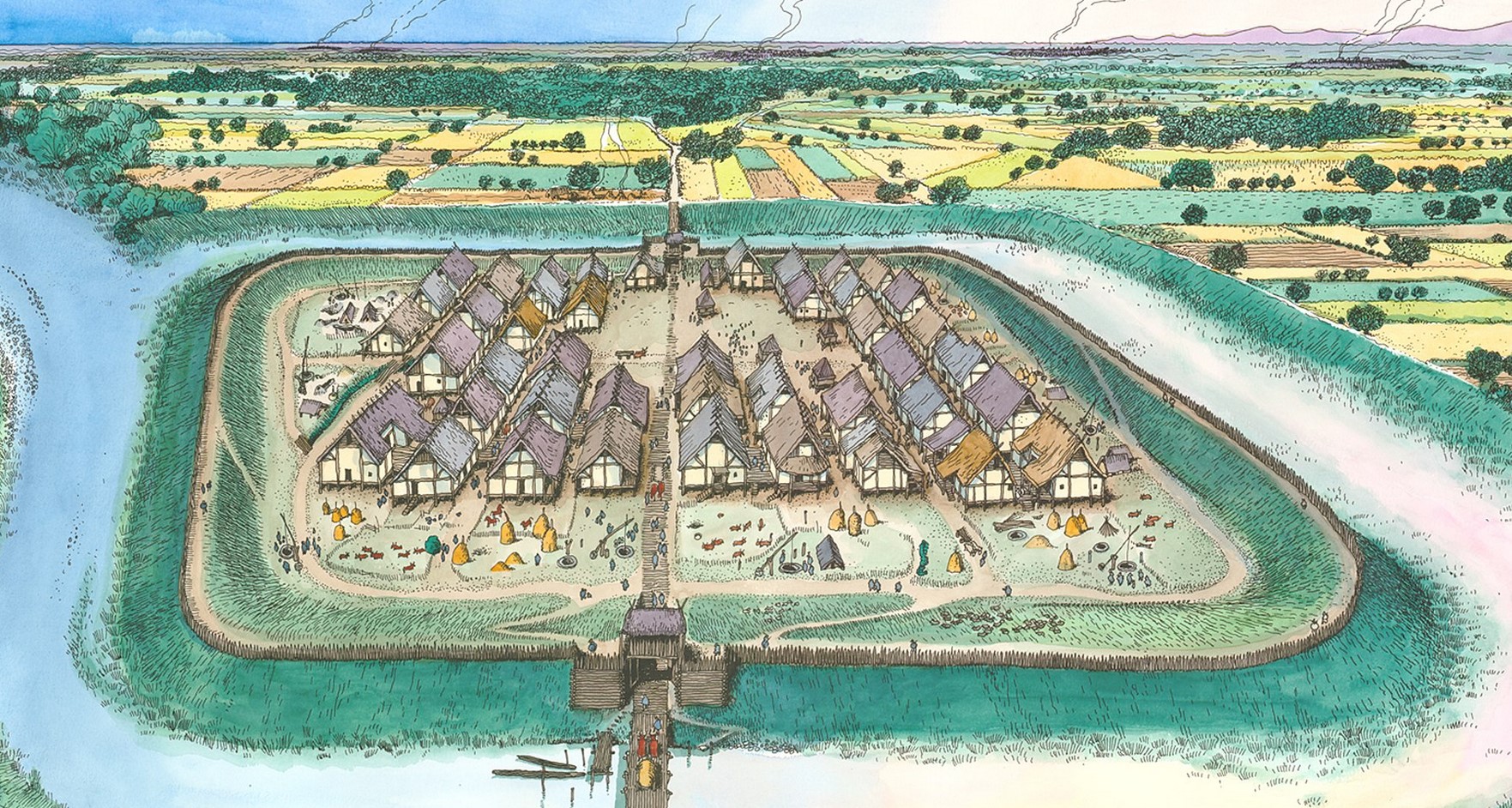
Marl is a lacustrine deposit, most typically black, giving rise to the 'black earth' identification of it found in mounds on the site of these settlements, that were a regular feature of the landscape of the Po plain. These mounds were not natural in origin; their soil contained many archaeological remains, and was sold as compost to fertilise the fields during the early decades of the 19th century. Until 1860, it was thought that these deposits came from Roman or Celtic dwellings or burial grounds. After, did it become apparent that these mounds were created by Bronze Age settlements and archaeologists used the term terramare to refer to these villages. They became famous throughout Europe, and their archaeological remains added to the treasure store of the museums.
.
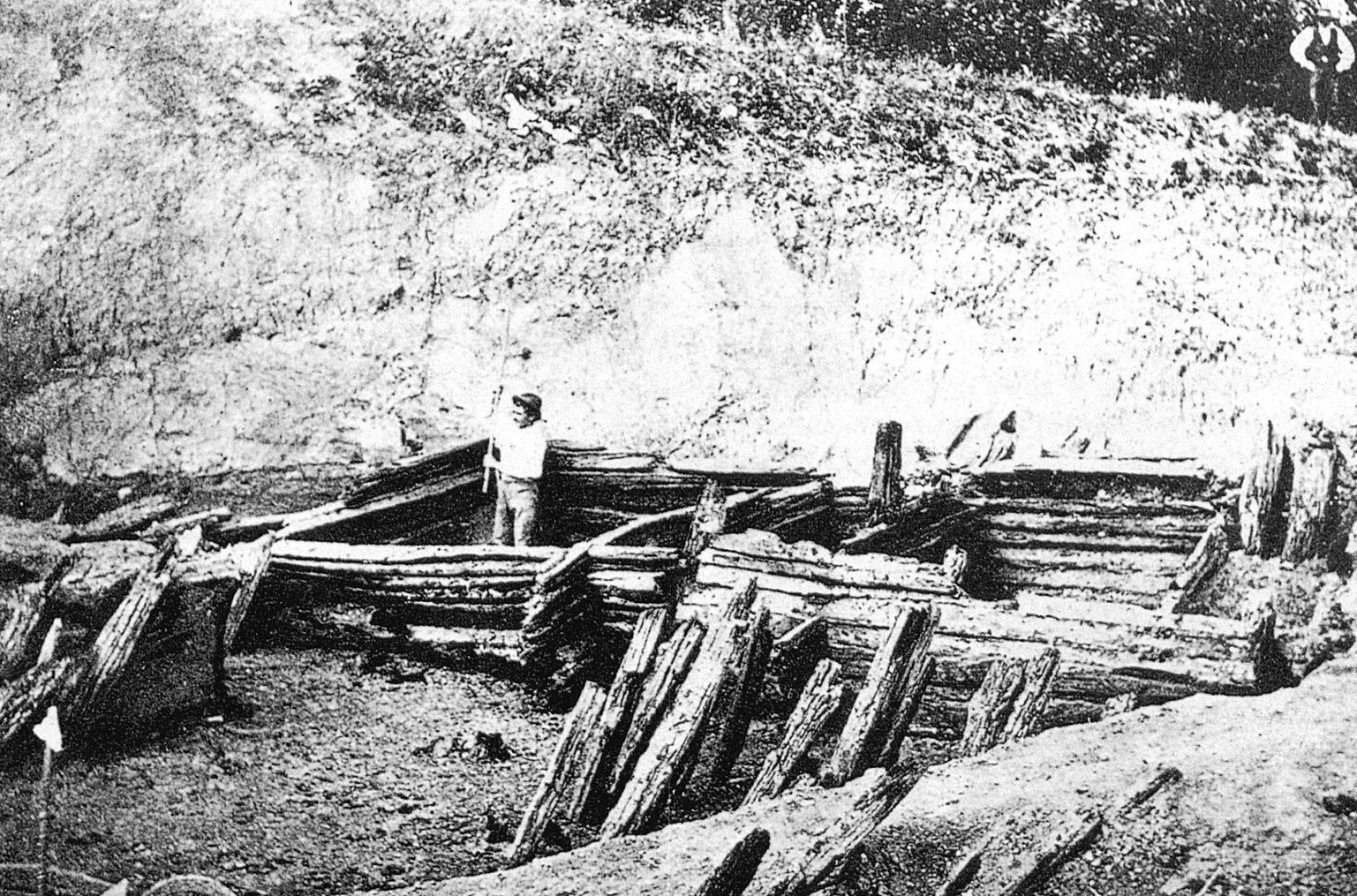
These sites were excavated exhaustively in 1860–1910. The excavations at the mound in Montale began during the second part of the 19th century and were resumed over a century later in 1996, bringing to light remains from a terramare settlement. As any other village, it is trapezoidal, with streets arranged in a quadrangular pattern. Some houses are built upon piles even though the village is entirely on dry land and some are not. There is currently no commonly accepted explanation for the piles. The whole is protected by an earthwork strengthened on the inside by buttresses, and encircled by a wide moat supplied with running water.
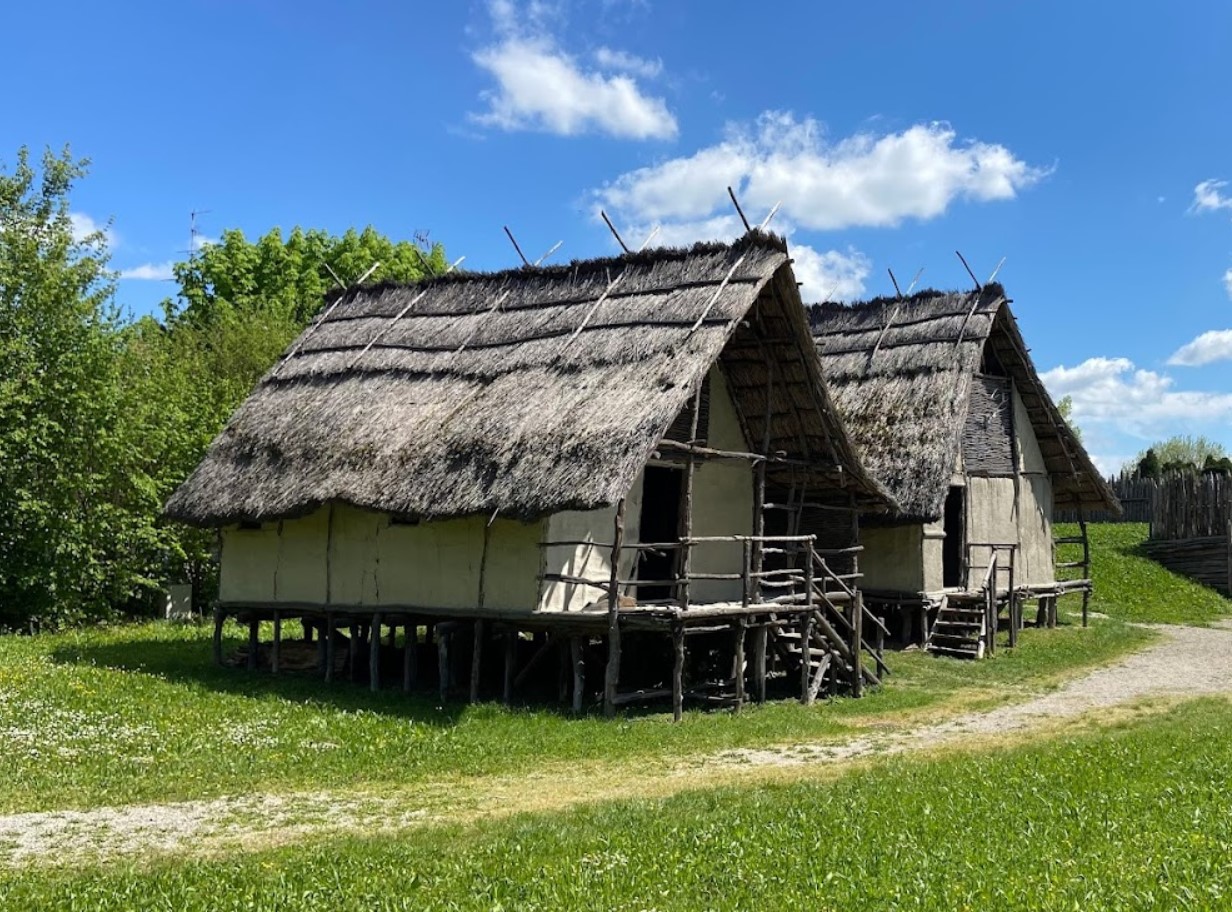
The inhabitants of the pile dwellings of terramare are called the Terramarans (Terramaricoli). They were hunters but practised agriculture - cultivating beans, grapes, wheat, and flax - and also had domesticated animals; they were fairly skilful metallurgists, casting bronze in moulds of stone and clay; they moulded a new sort of pottery; they cremated their dead, instead of burying them as their predecessors had done. Society was organised on a participatory model that involved the whole community. There were economic and social differences: the most important castes were those of chiefs, warriors, and the craftsmen who worked with metal. The womenfolk must also have enjoyed privileged status.
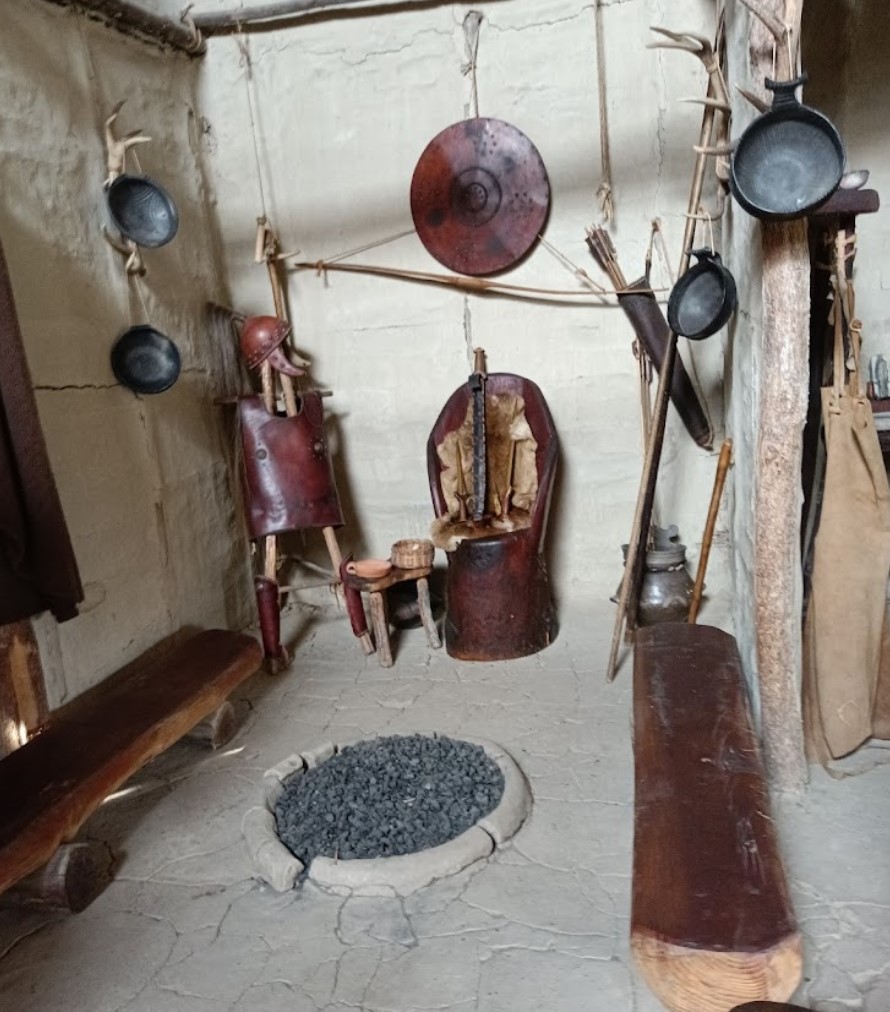
Significant differences of opinion have arisen as to the origin and ethnographic relations of the Terramarans. According to some scholars they were a new people, who had come from the North across the central and eastern Alps, and were identified as the Italici. But even those who accept this identification find that the archaeological records of stocks which were more definitely Italic reveal the continuation of the Bronze Culture, with the practice of burying the dead. More recently, some archeologists have proposed re-evaluations of contemporaneous Greek accounts, such as that of Dionysius of Halicarnassus, and to link the Terramarans to the Pelasgians whom the Greeks generally equated with the Tyrrhenians and specifically, therefore, the Etruscans. The Etruscan cities appear to have developed the preceding form of the terramare and there seem to have been singular analogies in the foundation rites of the two types of community. Under the pressure of the Etruscans the Osco-Umbrians are believed to have moved on towards the south of the peninsula.
In order to know more, you can visit:
- Wikipedia: [1]
This page was last edited on 8 June 2024
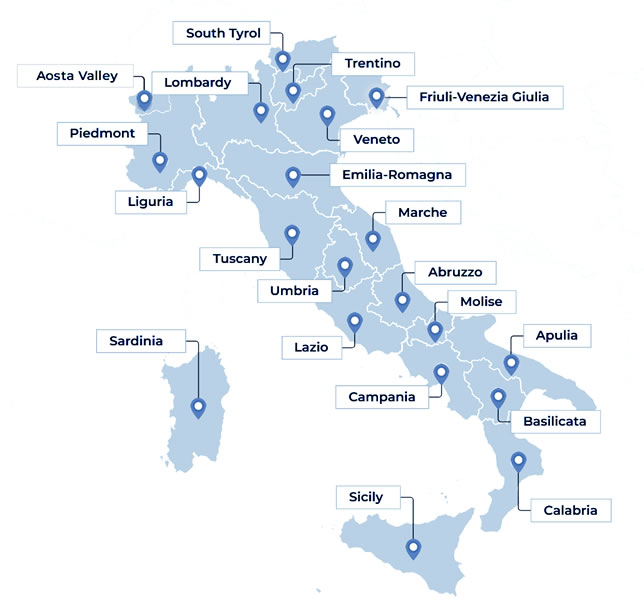
Open in Google Maps and find out what to visit in a place.
Go to: Abruzzo | Aosta Valley | Apulia | Basilicata | Calabria | Campania | Emilia Romagna | Friuli Venezia Giulia | Lazio | Liguria | Lombardy | Marche | Molise | Piedmont | Sardinia | Sicily | South Tyrol | Trentino | Tuscany | Umbria | Veneto

Text and images are available under the Creative Commons Attribution-ShareAlike License 4.0; - italystudynotes.eu - Privacy